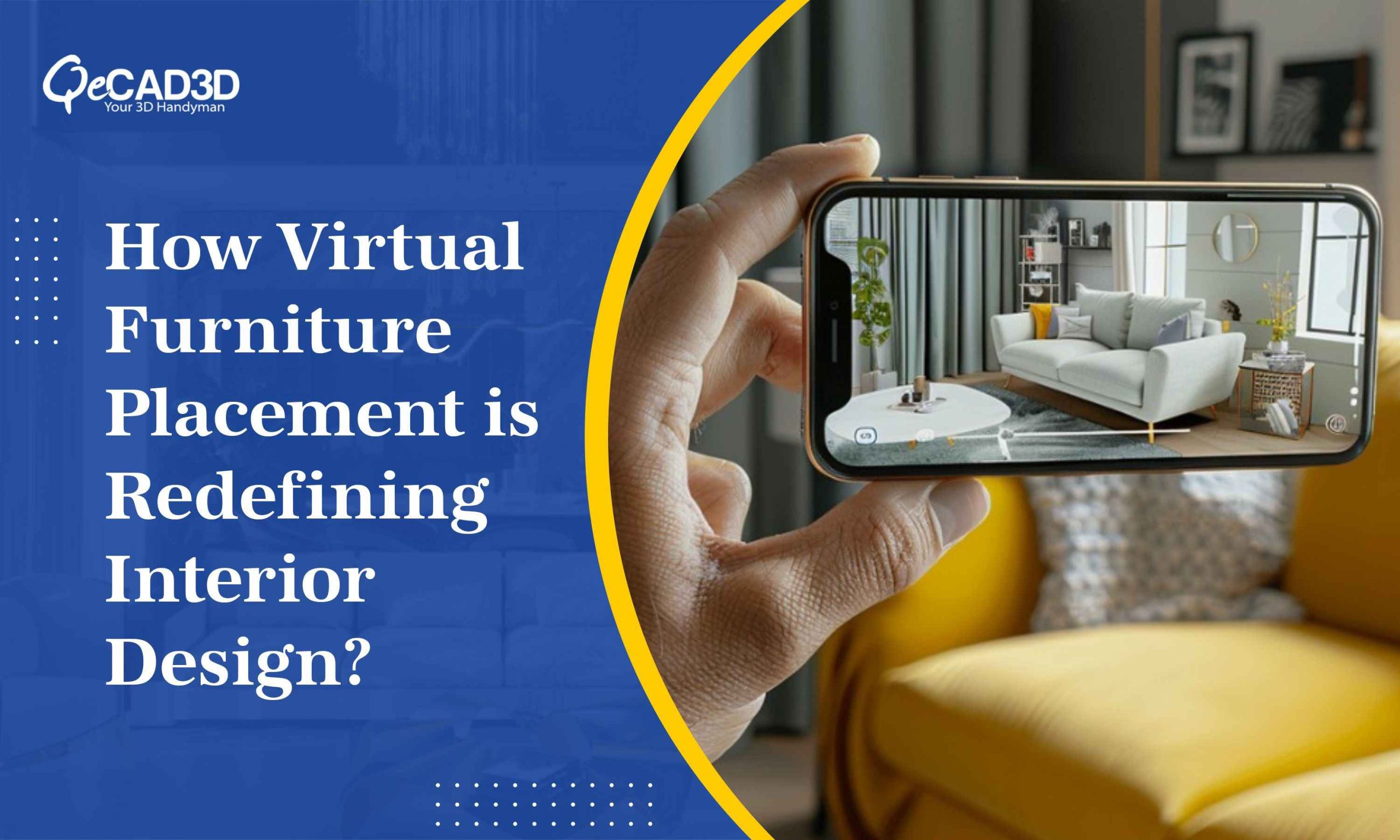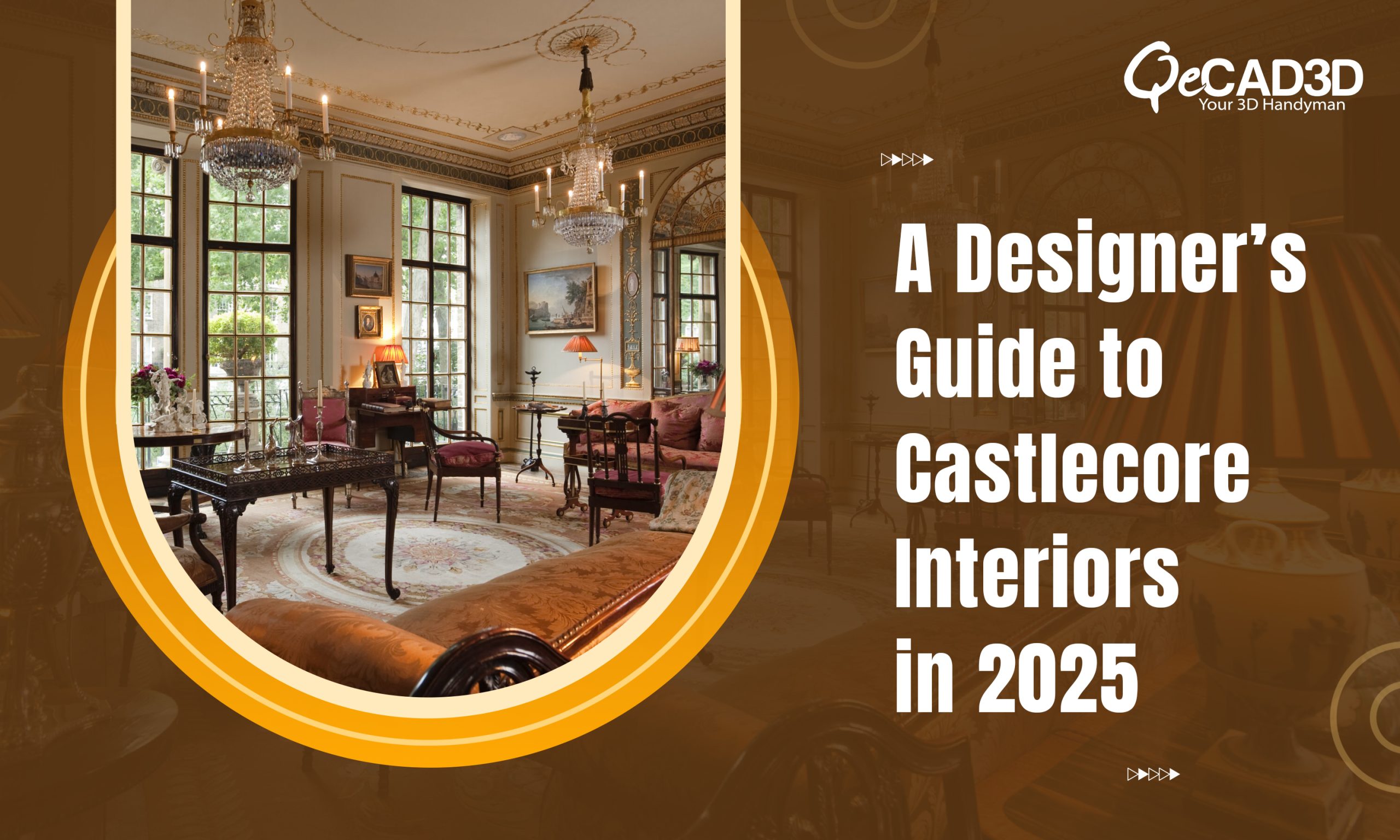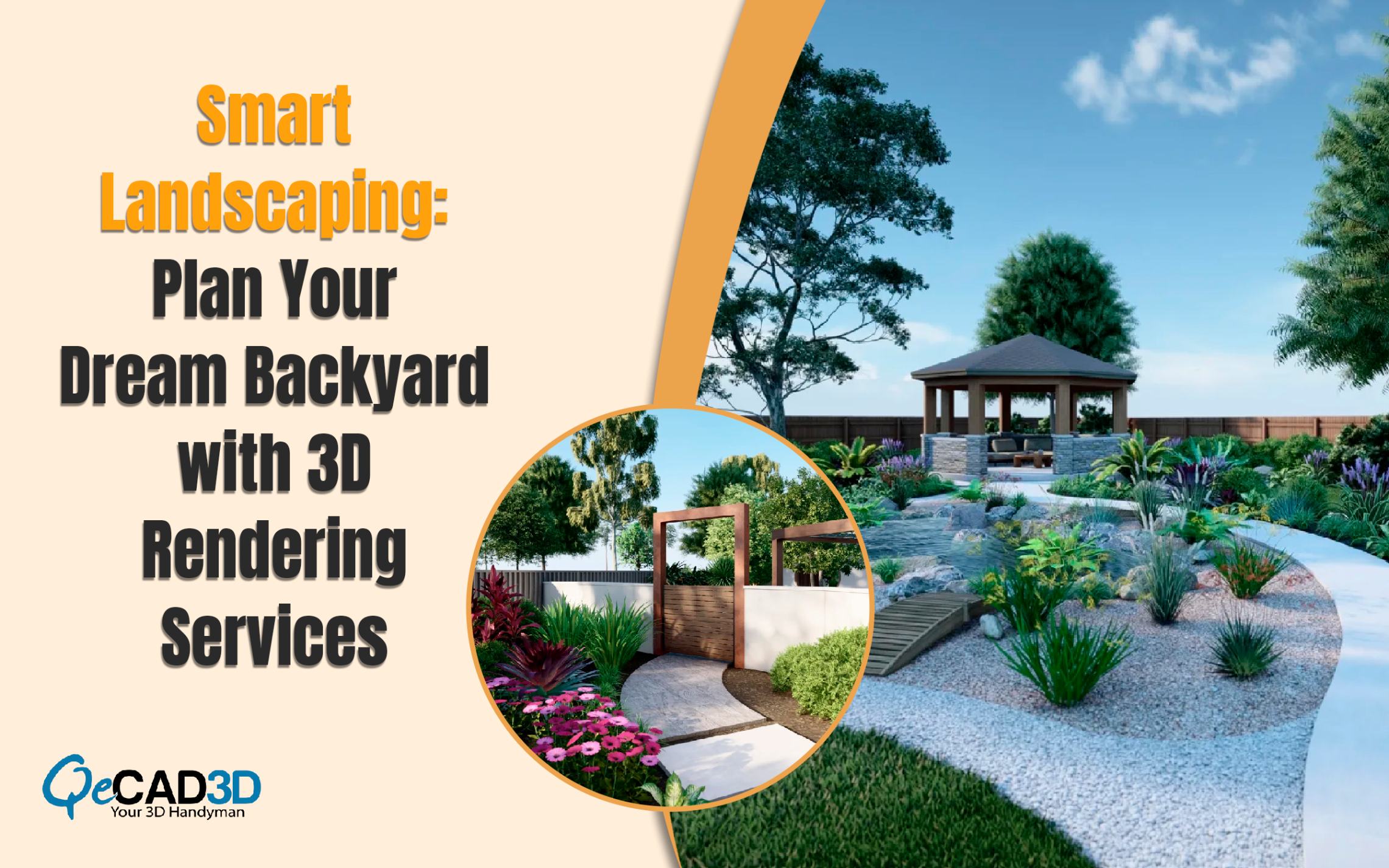How Virtual Furniture Placement is Redefining Interior Design?
Try before you buy is the concept trending now a days in almost all industries. Be it an ecommerce or real estate, people feel the urge to look in before spending in. In addition to this, even the advancements in virtual technology have revolutionized many industries and interior design is no exception. Among the many features, virtual furniture placement is one of them benefiting the designers and taking their projects to next level.
People demand to see how their interiors will look like and even the designers need to stay in sync with their ideas and plans. This technology becomes a saviour for all of them. It allows the designers, homeowners as well as the real estate agents to see exactly how the furniture will look and fit in a room—all from the comfort of their screens. With virtual furniture placement, interior design is moving from static mood boards to immersive, dynamic experiences that makes envisioning spaces easier and more accurate than ever.
What is Virtual Furniture Placement?
Virtual furniture placement is a digital tool that allows users to experiment with different layouts and styles of furniture in a 3D environment before making any physical changes to a specific room. By using augmented reality (AR) or virtual reality (VR) platforms, the designers can superimpose the digital furniture in the real-world settings. Platforms like SketchUp, Roomstyler and various AR-based apps allow designers to choose furniture, place it within a room and adjust it to see the overall effect. These tools form the base of Interior Design Rendering with the options for customization like fabric textures, colors as well as lightings.
Why It Matters for Interior Design?
Virtual furniture placement is transforming the interior design process for both professionals and clients. Here’s how:
- Enhanced Visualization and Realism
A flat, two-dimensional sketch or a mood board has its limits in showing clients how a space might look after a redesign. With virtual furniture placement, clients and designers can visualize layouts in 3D, making it easier to understand the spatial relationships, room flow along with the proportions. Seeing how a sofa, table or bookshelf will look within a real room brings the design concept to life thereby allowing the clients to “walk through” their future spaces virtually.
- Cost and Time Savings
Making changes to furniture placement or swapping out pieces after they’ve been bought is both costly and time-consuming. Virtual furniture placement lets the clients and designers experiment with a variety of layouts and pieces before committing to any purchases. This means that clients can make more confident decisions ultimately reducing the chance of costly mistakes and streamlining the overall design process.
- Customized, Real-Time Design Adjustments
The design preferences are highly personal. The Virtual furniture placement allows the users to quickly adjust the furniture, colors as well as the accessories to suit unique tastes and preferences. This means that the real-time changes can be made to suit a client’s vision.
- Better Collaboration and Communication
Virtual furniture placement also makes collaboration smoother and clearer. When clients can view an accurate rendering of their space, it leads to a more productive dialogue between them and the designer. Misunderstandings are reduced, and expectations are clearer, resulting in smoother project progression. Clients become more involved in the creative process, often leading to a finished product that better aligns with their preferences.
- Increased Flexibility and Experimentation
Virtual furniture placement empowers the designers to explore multiple options without the need for physical furniture rearrangements. If a client is torn between a mid-century modern look and a contemporary style, the designer can quickly demonstrate both styles within the same space. This flexibility encourages more creativity and opens up more possibilities that may not have been considered with traditional design methods.
The Technology Behind Virtual Furniture Placement
Virtual furniture placement relies on various things including AR, VR as well as the 3D rendering services. These tools work together to create accurate digital renderings of rooms and furniture. Many apps now use AI to automatically scale and position the furniture accurately based on the room’s dimensions. This automation provides the designers with a more reliable, to-scale representations and minimizing the guesswork.
Who Benefits from Virtual Furniture Placement?
- Homeowners: For DIY design projects, virtual furniture placement gives homeowners the tools to make informed decisions and see their visions come to life without any surprises.
- Interior Designers: Professionals can present multiple options to clients, experiment with different ideas, as well as convey their design concepts more clearly and effectively.
- Real Estate Agents: Staging a home virtually can boost a property’s appeal by helping potential buyers envision themselves in the space without the costs associated with the traditional staging.
Real World Examples/Applications
Example 1: Wayfair’s “View in Room” Feature
Wayfair, a major online furniture retailer, uses augmented reality (AR) to help customers visualize furniture in their own homes before they buy. Using the Wayfair app, customers can select a piece of furniture and use the “View in Room” feature to see it virtually placed in their space through their smartphone cameras. This tool has proven particularly useful for customers who may struggle with spatial visualization or worry about whether a piece will match their existing decor.
Example 2: IKEA Place App
IKEA, known for its affordable and stylish furniture, introduced the IKEA Place app, allowing customers to place furniture items virtually in their homes using augmented reality. This app not only shows furniture to scale but also adjusts based on the lighting conditions, so customers see a highly realistic representation of how pieces will look.
The Future of Virtual Furniture Placement in Interior Design
As virtual technology advances, the virtual furniture placement will only become more sophisticated. Soon, we can expect further developments like real-time spatial computing, which can adapt room dimensions automatically for even more precise visualizations as well as the AI-driven design suggestions based on style preferences.
Additionally, the integration of virtual furniture placement with e-commerce could enable clients to buy their chosen furniture directly through these platforms, making the design-to-purchase process seamless.
Virtual furniture placement is undeniably changing the way we approach the interior design thereby making it more accessible, efficient and engaging process.






